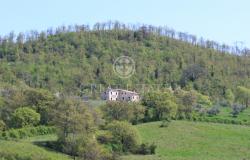 Florence's world-famous Boboli Gardens are paying tribute to their forerunners, with an exhibition devoted to gardens of the ancient world.
Florence's world-famous Boboli Gardens are paying tribute to their forerunners, with an exhibition devoted to gardens of the ancient world.
Although the Boboli park is one of the first and finest examples of formal 17th-century gardens, the exhibit looks at much earlier concepts, from the Mesopotamian world through to Imperial Rome.
Over 150 archaeological finds are on display, unearthed at the digs of Pompeii and Herculaneum, and on loan from Italian and foreign institutes around the world.
The event, staged in the Limonaia (Orangery), also features a series of reconstructions and models, exploring the development of gardens from the 1st millennium BC through to Ancient Rome.
It uses a series of specific examples to illustrate the change, starting with the Hanging Gardens of Babylon, near present-day Baghdad. Considered one of the Seven Wonders of the World, these were supposedly built by Nebuchadnezzar II around 600 BC to please his wife.
It moves on to look at the two different kinds of garden common in ancient Greece. The first of these were small grounds attached to places of worship, in which herbs and plants were grown for religious purposes.
The other kind were sites linked to academies and places of learning, in which plants were cultivated for research and study.
EXHIBIT DRAWS ON RECENT DISCOVERIES IN POMPEII.
But it was during Roman times that the modern idea of gardens developed, as private oases of beauty in which to relax and entertain, with fountains, plants, benches and hidden alcoves.
This section of the exhibit draws heavily on recent discoveries from Pompeii, buried by the eruption of Vesuvius in 79AD.
Extensive studies and reconstructions there have revealed that gardens in Ancient Rome were not just decorative, they were also used for growing herbs and plants for a variety of practical purposes.
Apple, quince, fig and olive trees were grown for their fruit, herbs such as basil, marjoram and thyme were used in food preparation and for medicinal purposes, wood from ash and willow were used to make bed staves and baskets, while cane was grown to make wicker furniture, musical instruments and screens for dividing rooms.
The exhibit not only looks at the variety of species and layout of these gardens, it also considers the crucial role played by water.
From the hydraulic machines of the Hanging Gardens to the extraordinary fountains that became popular in Greek times, it explores how water has been channelled and used to irrigate plants or incorporated into the overall garden design.
The exhibition closes outdoors, on the extensive lawn in front of the Limonaia. Here, archaeologists and botanists have reconstructed two of the gardens discovered in Pompeii: one attached to the sumptuous House of the Vettii and the other to the House of the Painters at Work.
The exhibition builds on work carried out by a team of experts at Pompeii, who have restored two other gardens to life in recent year.
Items using products grown in the on-site gardens - one associated with a herbalist, the other with Pompeii's largest perfumery and cosmetics store - have gone on general sale, proving hugely popular with visitors to the complex.
The exhibition runs until October 28.













